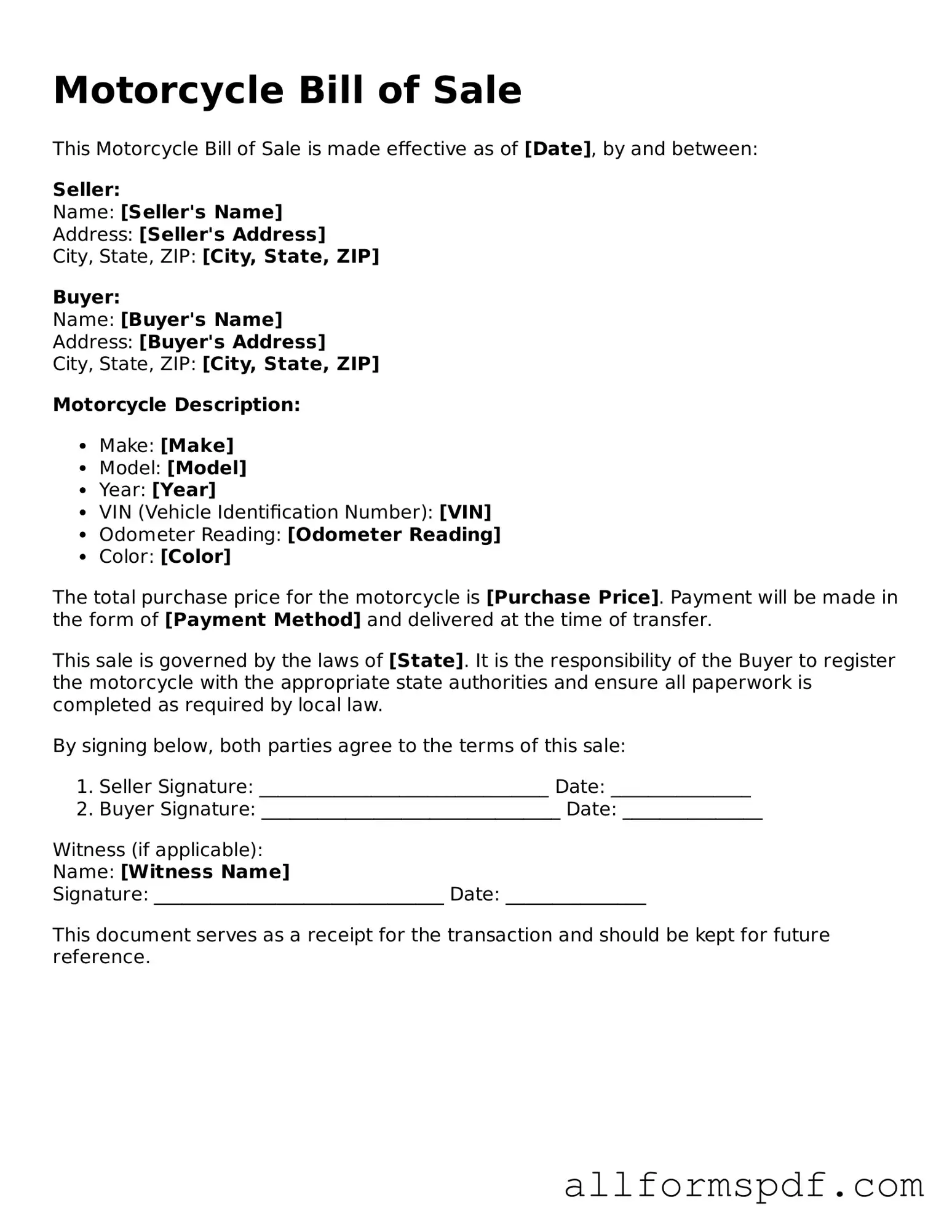Filling out a Motorcycle Bill of Sale form can seem straightforward, but many people make common mistakes that can lead to complications down the road. One frequent error is failing to include the correct vehicle identification number (VIN). The VIN is crucial for identifying the motorcycle and ensuring that the sale is legitimate. Omitting or miswriting this number can create confusion and may even complicate the transfer of ownership.
Another common mistake is not providing accurate buyer and seller information. It’s essential to include full names, addresses, and contact information for both parties involved in the transaction. Incomplete or incorrect details can lead to disputes later on, especially if there are any issues with the sale or if the motorcycle needs to be registered.
People often overlook the importance of including the sale price. This detail is not just a formality; it establishes the value of the transaction and may be necessary for tax purposes. Failing to document the sale price can raise questions from tax authorities or complicate future transactions involving the motorcycle.
Additionally, neglecting to sign and date the form is a common oversight. Both the buyer and seller must sign the Bill of Sale to validate the agreement. Without these signatures, the document may not hold up legally, leaving both parties vulnerable to disputes regarding ownership or payment.
Another mistake is not keeping a copy of the completed Bill of Sale. After the transaction, it’s vital for both parties to retain a copy for their records. This document serves as proof of the sale and can be essential if any issues arise in the future, such as disputes over ownership or claims of unpaid debts.
Finally, some individuals fail to check local laws regarding the Bill of Sale. Each state may have different requirements for what must be included or how the form should be executed. Ignoring these regulations can lead to unnecessary delays in registering the motorcycle or even legal complications. Always ensure that the form complies with local laws to avoid any future headaches.
